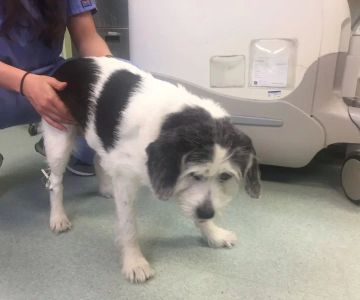- 1 - Understanding Your Dog’s Health and Behavior
- 2 - Common Early Signs of Illness Every Dog Owner Should Watch For
- 3 - Behavioral Changes That Signal Something Might Be Wrong
- 4 - Physical Symptoms That Require Attention
- 5 - Real Cases and Insights from Hidden Brook Veterinary
- 6 - The Role of Preventive Care and Regular Veterinary Visits
- 7 - What Pet Owners Can Do at Home to Keep Dogs Healthy
Understanding Your Dog’s Health and Behavior
For most pet owners, dogs are more than just companions—they’re family. That’s why knowing how to spot early signs of illness in dogs is one of the most valuable skills any owner can have. Early detection can make the difference between a minor issue and a serious health problem. Dogs often hide their discomfort by instinct, so subtle behavioral and physical cues are critical indicators that something may be wrong.
Veterinarians often say that “you know your dog best,” meaning small deviations from their normal routine can be the first sign of illness. Whether it’s eating less, sleeping more, or becoming unusually clingy, these changes deserve attention. Understanding what’s normal for your dog makes it much easier to recognize when things are not.
Common Early Signs of Illness Every Dog Owner Should Watch For
Changes in appetite and drinking habits
A sudden loss of appetite, excessive thirst, or refusal to eat favorite treats can be early signs of health issues ranging from dental pain to kidney problems. For example, if your dog is constantly drinking and urinating, it could signal diabetes or an infection.
Unexplained fatigue or lethargy
Dogs who become unusually tired or less playful may be fighting off an infection or experiencing pain. A normally energetic dog that suddenly prefers to lie down for hours might need a closer look from a vet.
Weight changes
Rapid weight loss or gain without dietary changes is another red flag. Hidden illnesses like thyroid imbalances, digestive disorders, or even cancer can cause weight fluctuations that develop gradually over time.
Behavioral Changes That Signal Something Might Be Wrong
Personality shifts and social withdrawal
If your friendly dog suddenly becomes distant, irritable, or unusually quiet, it could be more than moodiness. Behavioral changes are one of the most overlooked early symptoms of illness in dogs. Pain, nausea, or neurological conditions can cause them to isolate or behave aggressively.
Changes in sleep patterns or anxiety
Restlessness, pacing at night, or increased anxiety around noises can signal underlying discomfort or hormonal imbalances. Dogs with joint pain or internal issues often shift positions frequently to find relief.
Loss of interest in favorite activities
When a dog no longer shows excitement for walks or toys, it might be due to illness, not aging. Even mild infections can drain energy and affect motivation.
Physical Symptoms That Require Attention
Coat and skin changes
Healthy dogs have shiny coats and smooth skin. If you notice dull fur, bald spots, rashes, or excessive scratching, it may point to allergies, parasites, or skin infections. A dog constantly licking one area may also be trying to soothe pain beneath the skin.
Digestive issues
Vomiting, diarrhea, or constipation lasting more than a day is cause for concern. While dietary changes or stress can cause temporary stomach issues, persistent symptoms require professional evaluation.
Breathing or coughing problems
Frequent coughing, wheezing, or labored breathing should never be ignored. These symptoms may indicate respiratory infections, heart conditions, or even something lodged in the throat.
Foul breath or oral issues
Bad breath isn’t just unpleasant—it can signal dental decay or more serious conditions like kidney disease. Regular dental checks are essential to prevent oral infections from spreading.
Real Cases and Insights from Hidden Brook Veterinary
At Hidden Brook Veterinary, we’ve seen countless examples where early detection made all the difference. One case involved a Labrador retriever named Bella who began sleeping more and skipping meals. Her owner thought it was seasonal behavior, but blood tests revealed early-stage liver disease. Prompt treatment allowed Bella to make a full recovery.
Another case involved a small terrier showing subtle limping after walks. What seemed like minor soreness turned out to be arthritis beginning in her hips. Early intervention with supplements and physiotherapy helped her maintain mobility and comfort for years. These examples remind us that “acting early” often means “saving health.”
The Role of Preventive Care and Regular Veterinary Visits
Annual exams and blood tests
Regular veterinary visits are one of the best defenses against illness. Annual exams, routine blood work, and dental cleanings can detect hidden problems before they progress. Prevention is not only better for your dog—it’s often more affordable than treatment for advanced conditions.
Vaccinations and parasite control
Keeping up with vaccines, flea prevention, and heartworm medication protects your dog from common diseases that can otherwise go unnoticed until it’s too late. Vets can tailor preventive plans based on your dog’s breed, age, and lifestyle.
What Pet Owners Can Do at Home to Keep Dogs Healthy
1. Maintain a health journal
Tracking eating habits, weight, energy levels, and bowel movements can help you notice changes over time. Even subtle patterns can provide your vet with valuable clues during checkups.
2. Create a calm, stress-free environment
Stress can worsen existing conditions or trigger behavioral changes that mimic illness. Provide your dog with a predictable routine, exercise, and mental stimulation.
3. Educate yourself and act fast
Familiarize yourself with early signs of illness and never hesitate to consult a veterinarian when something feels off. It’s always better to check and find nothing than to wait and discover a serious issue later.
At Hidden Brook Veterinary, we believe proactive care and awareness are the foundation of lifelong wellness. Our experienced team is here to guide pet owners in identifying, treating, and preventing common health concerns before they become emergencies.
By learning how to recognize the early symptoms, you’re not just protecting your dog’s health—you’re extending their happiness and ensuring many more joyful years together.











